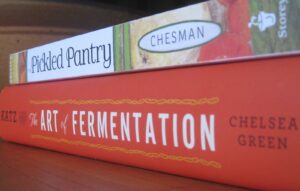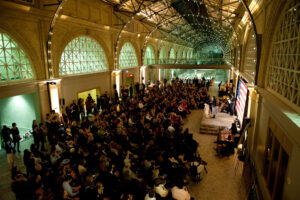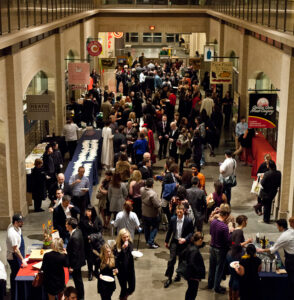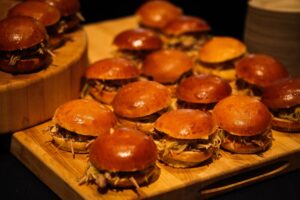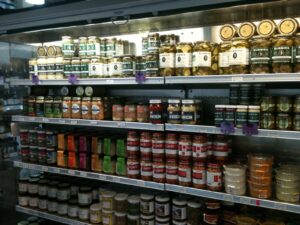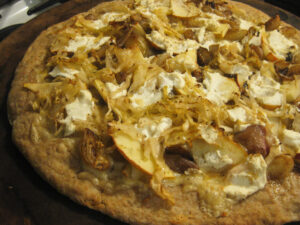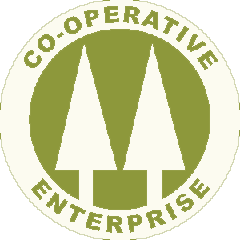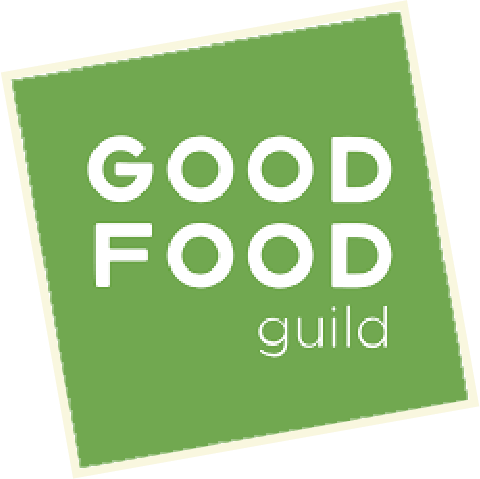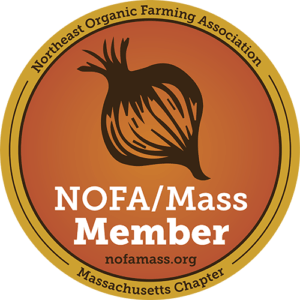
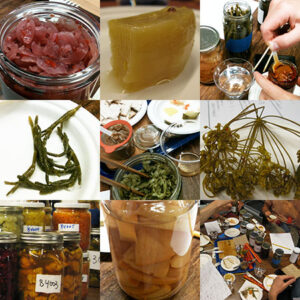
Last weekend, Dan and I participated in the fourth annual Good Food Awards‘ judging event – in the pickle category. We were psyched for this! Not only did we get to travel to San Francisco and taste LOTS of incredible pickles – we also got to meet new pickle people and connect with pickle friends we’ve made at previous GFA events. It was a fantastic experience.
The event was much larger than we expected, almost as big as the GFA ceremony itself. For each of the 10 categories (pickles, preserves, cheese, beer, chocolate, coffee, spirits, confections, oils, charcuterie) there were 20 or so judges ready to taste the nearly 1,500 total GFA entries for 2014, including ~120 pickle entries. In the morning, the pickle judges split into small groups focused on regions (I was South; Dan was West), and each group selected 10 pickles to recommend to the larger group based on flavor, balance, texture, and appearance, among other criteria. After lunch, the pickle judges tasted the 50 pickles selected in the morning and gave them numerical scores. We won’t know until the awards ceremony which pickles won, but I have my guesses…
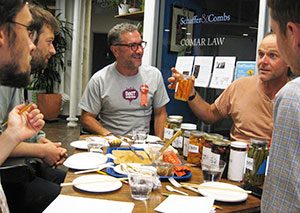
I loved tasting SO many different kinds of pickles – vinegar, fermented, krauts, fruit, onions, beets, and relishes. The fermented black bean and garlic paste was a highlight for me – its spicy kick was significant and enduring! I also loved the turmeric-yellow kraut packed with ginger, yum. Dan’s day was made by the vinegar pickled sea beans (the what?) – an aquatic plant neither of us had heard of, harvested from salt marshes. And those pickled cherries – nicely flavored with a little cinnamon and clove – came in handy immediately following the jar of cucumber pickles full of halved habanero peppers.

Among the judges were experienced pickle-tasters, pickle-writers, and pickle-makers, and it was fun to talk details of sugar-sour balance, degree of fermentation, slicing techniques, and vegetable texture. The selection of entries were beautifully displayed – it was lovely to see the variety of veggies, colors, textures, and jars.
The pickle category was expertly coordinated by Chris Forbes from Sour Puss Pickles in Brooklyn, NY and Todd Champagne from Happy Girl Kitchen Co in Monterey, CA. While Chris masterminded the organization of all those pickles, Todd kept up our spirits by making an appearance as “Chilly Dilly”, a cucurbit that is “…kind of a Big Dill”. They kept us in pickles all day long, PLUS a parade of palate cleansers to keep our taste buds primed – the highlights included some very special GFA entries from the chocolate and cheese categories once their judges were done tasting from them. Oh, and some nice selections left over from the spirits and beer categories, too.
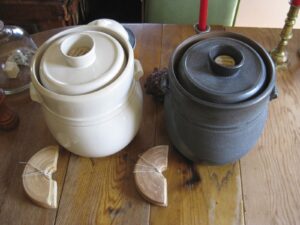
It was a wonderful place to meet and re-connect with a variety of pickle folks. It put us in a reminiscent mood, too. When we started Real Pickles in 2001, there were only a handful of businesses around the country making fermented pickles and sauerkraut. Now there are companies sprouting up all over the place!! Dan and I really appreciate meeting new companies who are perfecting the art of the pickle, and to talk techniques, recipes, and business models. We had a great time connecting with Mara from Zuké and learning about her new-ish pickle business in Boulder, CO. We also got to meet Jennifer Harris who organizes Sonoma County’s wildly popular Farm to Fermentation Festival, and Sarah Kersten of Counter Culture Pottery, who makes elegant fermentation crocks.
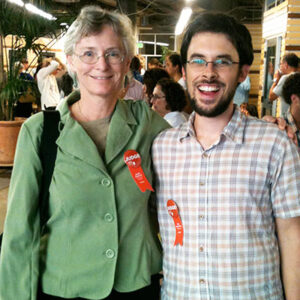
When Real Pickles was getting its start, there were also only a handful of books about fermented pickles, or role models in the world of fermentation (think: pre-Sandor Katz’s Wild Fermentation!). Two of those early authors were Sally Fallon (Nourishing Traditions) and Linda Ziedrich (Joy of Pickling). We count ourselves very lucky that, this past weekend, we were able to meet and judge pickles alongside one of our early inspirations and teachers, Linda Ziedrich.
When Real Pickles was getting its start (is there an echo in here?), fermented vegetables were a food of the past, a fringe-hippie-food, only found in backwoods natural foods stores and in the pantries of homesteaders. A mere dozen years later, it is at the height of food-trendiness, the focus of many festivals (see this, this, and this), and the mark of the hippest hipster (any hipster worth his or her hand-harvested unrefined sea salt, anyway).
The timing of this trend is uncanny (pun intended), as this food revival is gaining recognition from the science community, as well. In just the last few years, scientists have been recognizing the amazing benefits of fermented foods to our overall health – benefits that our ancestors enjoyed and came to depend on for thousands of years, but that we have unwittingly excluded in our transition to more processed and industrialized foods. In his newest book, Cooked, Michael Pollan enumerates dozens of recent scientific articles relating the importance of beneficial bacteria in protecting our intestinal health, promoting our immune defense, and maintaining our mental well-being. Scientists are also recognizing that our recent deficiency in fermented foods teeming with live cultures may be part of the reason for some of our generation’s most serious health problems, such as allergies, obesity, seasonal colds and flus, and some cancers. Pickle, anyone?
But back to the Good Food Awards… needless to say, there was plenty of enthusiasm among the pickle judges and aficionados we spent the weekend with. One of the best things about the Good Food Awards is that it is not just a contest, where your product is pitted against those of your peers and competitors. So much of it is about connecting food producers, inspiring conversation, trading ideas and methods, and giving each other a pat on the back. Being a food producer can be isolating, especially when regionally-focused, so it can be SO inspiring to talk to other people with similar experiences. Really, in the world of fermented pickling, we are not competitors. The more producers there are, the more we are recognized as a legitimate food category. Participating in the Good Food Awards has given us a real sense for our larger community of fermenters and fellow picklers, and we are so happy to be a part of it!

